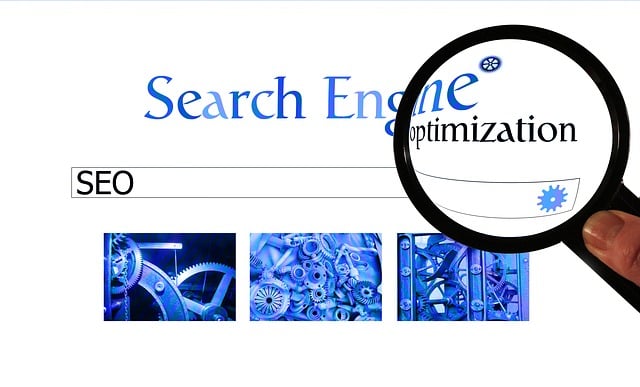Understanding user intent is paramount for successful SEO Ranking Strategies. Search engines like Google prioritize content that aligns with user search queries, leading to improved rankings for valuable answers. This involves keyword research using tools to uncover user intent behind specific terms. On-page optimization ensures content meets these expectations by incorporating keywords strategically and optimizing technical aspects for better user experience. High-quality, relevant content tailored to user needs boosts rankings. Technical SEO optimizations, including site speed and mobile responsiveness, enhance credibility. Effective link building from reputable sources signals authority. Continuous analysis of user behavior, search trends, and feedback is crucial to adapt content and maintain trust in the evolving digital landscape.
User Intent Ranking Strategies are pivotal in today’s digital landscape, where search engines strive to deliver content that aligns perfectly with user queries. This article explores a comprehensive approach to optimizing your online presence through six key strategies: understanding user intent, conducting keyword research, on-page optimization, content quality and relevance, technical SEO considerations, link building, and continuous analysis. By implementing these SEO ranking strategies, you can enhance user experience and drive better search engine rankings.
Understanding User Intent: The Foundation of Ranking Strategies

Understanding user intent is the cornerstone upon which effective SEO ranking strategies are built. Search engines, primarily Google, have evolved to go beyond mere keyword matching. They now strive to comprehend the underlying purpose behind a user’s query, aiming to deliver results that meet their specific needs and expectations. For instance, a user searching for “best coffee shops near me” intends not just to find names but seeks relevant, high-quality local recommendations.
This shift in focus demands that content creators and marketers tailor their approach accordingly. By aligning content with the user’s intent, sites can offer valuable answers, fostering higher engagement and satisfaction. This, in turn, signals search engines that the site is a reliable source, leading to improved rankings over time. Thus, a robust understanding of user intent becomes a powerful tool within the arsenal of any successful SEO ranking strategy.
Keyword Research: Unlocking User Search Intent

Keyword research is a fundamental step in understanding user search intent, which is pivotal for effective SEO ranking strategies. By delving into tools like Google Keyword Planner or SEMrush, marketers can uncover the specific terms and phrases users employ to find information, products, or services related to their queries. This process allows businesses to align their content with user expectations, ensuring that the provided answers resonate directly with what searchers are seeking.
When conducting keyword research, it’s crucial to consider not just popular search terms but also long-tail keywords—phrases that are more specific and usually reflect a user’s intent more accurately. These longer queries often indicate a user’s desire for detailed information or a particular solution, making them valuable assets in crafting content that ranks higher on search engines while better serving the needs of potential customers.
On-Page Optimization: Aligning Content with User Expectations

On-Page optimization is a vital component of successful SEO ranking strategies. It involves closely aligning your website’s content with the user’s expectations and search queries. By optimizing individual web pages, you ensure that each page offers relevant, high-quality information tailored to specific user intents. This strategy leverages keyword research to identify terms users type into search engines, then strategically incorporates these keywords into various elements of the page, from titles and headings to meta descriptions and body copy.
Effective on-page optimization also extends to enhancing technical aspects like page load speeds, mobile responsiveness, and structured data markup. These optimizations improve user experience, encouraging visitors to engage longer and interact more with your content. Search engines, in turn, recognize these pages as valuable resources, boosting their ranking in search results, thereby driving more organic traffic to the site.
Content Quality and Relevance: Meeting User Needs Effectively

In the realm of SEO Ranking Strategies, content quality and relevance play a pivotal role in ensuring user intent is accurately met. High-quality content that aligns closely with what users are searching for can significantly boost search engine rankings and foster better engagement. This involves not just providing factual information but also offering insights, solutions, or entertainment that cater to the user’s specific needs and preferences. Well-crafted content should be thorough yet concise, using language that is easily comprehensible to the target audience.
Relevance is key; content must be directly related to the keywords and phrases users are typing into search engines. Incorporating these terms naturally within headings, subheadings, and body text demonstrates to search algorithms that your content is a valuable resource for the intended audience. Regularly updating content to keep it current and relevant also signals to search engines that your site is active and authoritative in its domain. Effective content quality and relevance are thus essential SEO Ranking Strategies that not only attract but also retain users, ultimately enhancing user experience and website performance.
Technical SEO Considerations for Enhanced User Experience

In the realm of SEO Ranking Strategies, Technical SEO considerations play a pivotal role in enhancing user experience, ultimately impacting search engine rankings. Optimizing site speed and performance is paramount; fast-loading pages not only delight users but also signal to search engines that your website is reliable and worthy of higher placement. Additionally, ensuring mobile responsiveness ensures your site adapts seamlessly to various devices, catering to the majority of online users who access the internet via smartphones and tablets.
Structured data markup and XML sitemaps are instrumental in guiding search engine crawlers through your site’s content hierarchy and rich snippets. These technical implementations not only improve crawlability but also enrich search results with enhanced information, drawing users’ attention and boosting click-through rates. Moreover, secure connectivity through HTTPS encrypts user data, building trust and assuring both users and search engines that your website is safe for interaction.
Link Building and Authority: Signaling Trust to Search Engines

Link building is a cornerstone of effective SEO ranking strategies, as it signals trust and authority to search engines. When high-quality websites link to yours, it acts as a vote of confidence, indicating that your content is valuable and credible. This trust signal strengthens your site’s authority, which is a key factor in search engine rankings. Search engines like Google use complex algorithms to analyze these links, considering factors such as the linking site’s reputation, relevance, and user experience to determine the value of the link.
By strategically acquiring backlinks from reputable sources, you can significantly enhance your website’s SEO performance. This involves identifying relevant industries and blogs in your niche, creating engaging content that naturally attracts links, and reaching out to webmasters for collaboration or guest blogging opportunities. Remember, quality trumps quantity; a single high-authority link can have more impact than dozens of low-quality ones.
Continuous Analysis and Refinement: Adapting to Evolving User Behavior

In the dynamic landscape of digital search, understanding user intent is a game-changer for effective SEO ranking strategies. Continuous analysis and refinement are paramount to keeping up with evolving user behavior. By closely monitoring search trends, click patterns, and feedback signals, businesses can adapt their content and algorithms to align perfectly with what users truly seek. This iterative process involves regularly updating keywords, refining meta tags, and enhancing user experience to ensure the site remains a trusted source of information.
As users’ preferences shift and new technologies emerge, so does the need for flexible SEO approaches. Staying agile allows businesses to capitalize on emerging search trends, incorporate fresh content formats, and optimize for voice search queries. Regular analysis enables them to identify gaps in their strategies and make data-driven adjustments, ultimately driving higher rankings and user satisfaction.
